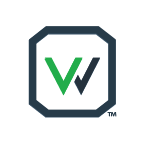Transforming Your Environmental Services Company with Technology: Vol 4 - The Power of Connectivity
May 21, 2024

One of the most important elements of a digital transformation is its ability to foster connection.
Whether between key stakeholders or the processes they conduct, the ability to connect is essential to a business’ success. One great example of the impact of connectivity can be seen in Apple. As we all know, Apple products like the iPhone and iPad make it easy to connect with other people, whether they’re in the same room, or a thousand miles away. Apple’s connectivity goes beyond this, however; it also boasts a seamless interface that makes it easy to complete several tasks at the same time, such as listening to music while taking notes. Connectivity is one of the greatest strengths of digital solutions, and is especially important in scaling a business.
Historically, the waste industry has struggled to achieve connectivity in this same way.
For one, the waste industry’s stakeholders – generally speaking, generators, service providers, and disposal facilities – are quite distant from one another. It is rare that any one stakeholder in the disposal of a waste stream sees the entire process from beginning to end, and this gap can make it difficult for the parties involved to communicate. This same issue can be seen in the processes themselves. For instance, the processes of profiling a waste stream, routing it, transporting it, and disposing of it are distributed across several participants, businesses, and even geographic locations. Even the processes undertaken by a single participant can be disconnected from one another, such as in the order process, where the creation and invoicing of an order may occur in entirely different applications. At any of these gaps, there is potential for miscommunication, and a
misunderstanding in the hazardous waste space can be catastrophic. The fragmented nature of the waste industry makes it a difficult field to work in, and an even more difficult one to excel in.
WASTELINQ is a digital solution specifically designed to tackle the challenges of the hazardous waste industry.
As the former operators of an environmental service company, we are all too familiar with the disconnects that exist both between industry players and among the processes they carry out – and we can help you eliminate them. We offer a range of solutions for any player in the waste industry that can help you improve your connectivity at any stage of the disposal process.
- WASTELINQ’s Customer Portal helps to connect service providers with their generators, ensuring a smooth process with as little disruption as possible.
- WASTELINQ Enterprise allows greater connectivity between environmental service companies and disposal facilities, including greater transparency in pricing and the ability to easily connect with a number of disposal facilities at the press of a button.
- WASTELINQ’s Advanced Waste Tracking application allows any participant in the disposal process to track their waste streams in real time, allowing unrivaled visibility into waste movements.
WASTELINQ Network provides this connectivity as well, alongside a range of well-connected processes that minimize both the time spent in the disposal process and the number of errors that might occur when interfacing with TSDFs independently. This connectivity of processes can be seen as soon as a profile is created in our software: our proprietary Profile Assist solution helps you to create an accurate profile that can be used at any affiliated TSDF, and feeds directly into our Dynamic Routing algorithm, which helps you select the optimal disposal facility for your needs. This level of connectivity is unprecedented in the waste industry, and can save your business from wasted labor and unnecessary mistakes, no matter what your role is in the process.
The waste industry is complex, and it’s easy for things to slip through the cracks in a field with so many disconnects. At WASTELINQ, it is our mission to bring these disparate pieces together and make the waste industry as simple, connected, and transparent as possible.